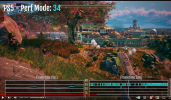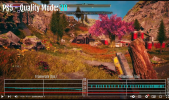You can effectively replace direct visibility rasterization with rays if you can afford to path trace the scene anyway -- at a certain scene complexity it will be cheaper than trying to rasterize everything.If a future GPU that's built for path tracing has raster perf just sitting there you don't think they won't find any use for it?
A GPU fast enough to path trace modern games at ~60fps/4k and run hit shaders on every bounce can probably easily simulate a legacy game's rasterization pipeline in compute, anyway, it's not like rasterizing a triangle is a magic problem that needs special hardware in principle.


